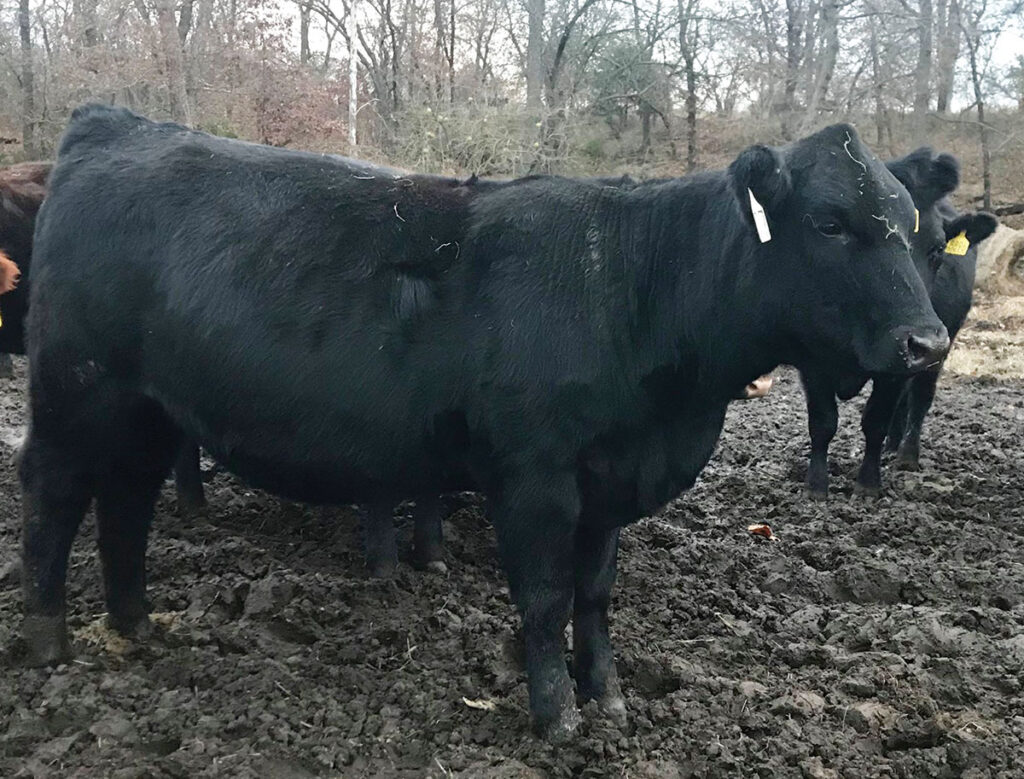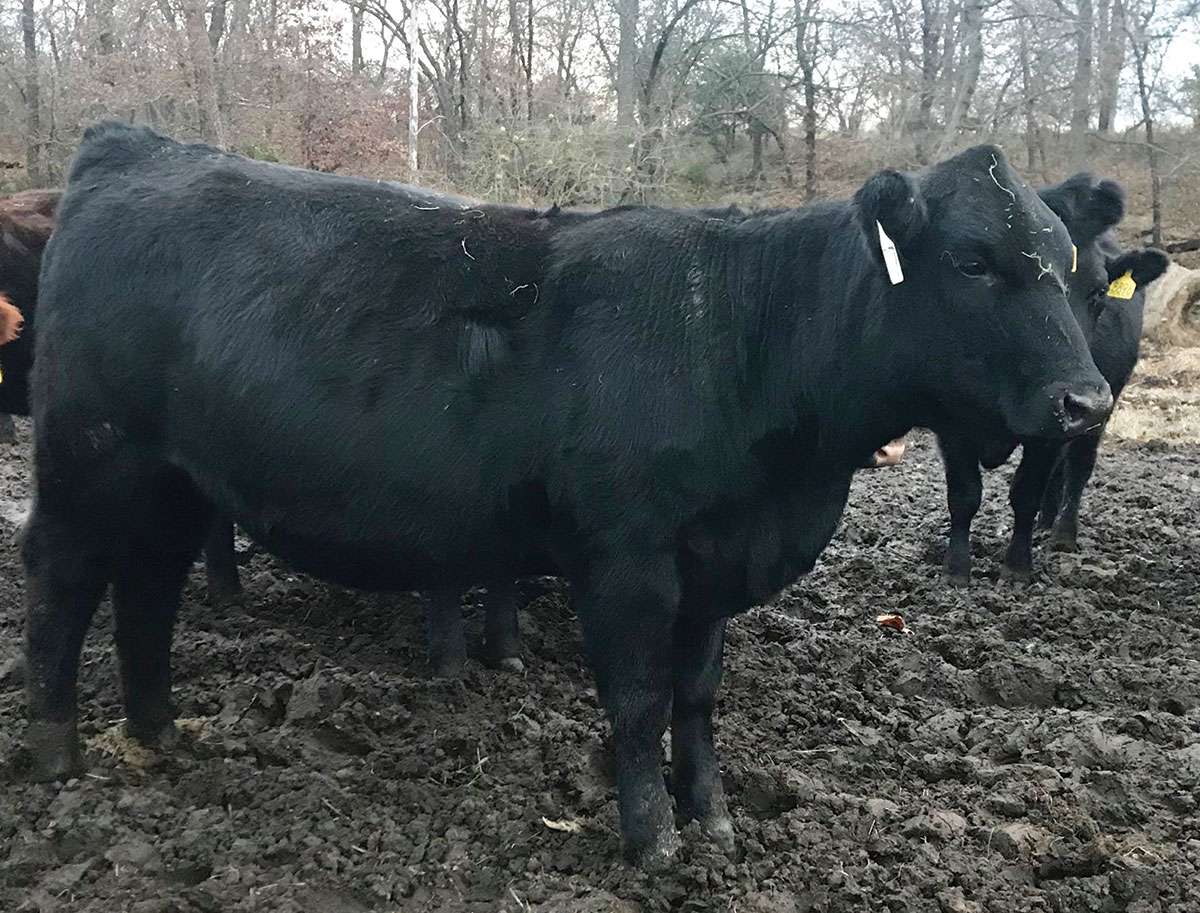
The Webers strive to continually improve the quality of their herd
LAMAR, MO. – Twenty-three years ago, Jerry and Angela Weber started their married life with 40 acres and 30 cows. Today, the Lamar, Mo., couple and their children, George and Lilly, have expanded their herd and are focusing on producing registered Balancer and Gelbvieh cattle and Angus and Red Angus.
“When we first got married, we had commercial Angus, then our children started showing Gelbvieh, and it started growing from there,” Angela explained.
Jerry and Angela grew up in the cattle industry and appreciate the attributes of the Gelbvieh and Balancers.
“They have longevity and good maternal traits,” Angela said. “They also breed back a lot better than some breeds do, even in the long, hot summer. We also look a lot at structural soundness. If they can’t get out and walk, they aren’t able to function and produce like we need them to. We’ve got some nice cows, both commercial and registered.”
The Webers focus on building quality genetics to produce the animals they desire. Their current herd is about 200 head of registered and commercial animals. The family utilizes multiple breeding methods, including AI and ET with a clean-up bull for the registered cattle, and natural breeding for the commercial herd, which also serves as recips for embryos.
“We have about four donor females right now, but we have others we have flushed in the past that we still have embryos from,” Angela said. “If a new bull comes out, we might want to try him with a cow, but we don’t flush them every year. If you get too many, you are sitting on eggs you don’t know what to do with.”
In addition to raising their replacement females, the Webers look outside their herd, typically buying at registered sales.
“We always look at new bulls too. You have to do that to stay up with the industry,” Angela said.
Heifers are added to the breeding program at about a year of age.
“Production comes first; open cows don’t make any money,” Jerry said. “I don’t wait until they are 2 years old. The sooner I can get them into production, the sooner I can make money.”
All first-calf heifers are bred via bull service.
“We have got to have such a high accuracy; we will typically buy former AI sires,” Jerry said of their bull selection for heifers. “Our heifers we keep as replacements never run with our cows. Because we breed them young, we will try to give them a little more feed so they grow.”
If a heifer fails to breed the first time, she is culled.
“If it’s one of the kids’ show heifers, we’ve made an exception, but we’re pretty strict,” Angela said.
For second- or third-calf females, there’s a little leeway with there being two breeding cycles.
“Raising a calf can be really hard on them,” Jerry said. “We might move them into the next group. We will give them an extra few months because we already have so much in them.”
Older open cows or cows with chronic issues are culled.
“Everyone can have a bad day, but if I have to give more than one shot for limping in a year, she won’t make the cut,” Jerry said.
Bulls from the registered herd are developed on the farm and sold via private treaty. Bulls will also go into the Weber’s commercial herd.
“We use new, younger bulls on our registered herd through AI or embryos,” Jerry said. “Putting some bulls into our commercial herd gives us a chance to see what they can produce and what they can do.”
Bull calves are evaluated from a young age for their potential future.
“We watch them while they are growing,” Jerry said. “As people start to call and look for bulls, you have to decide if you want to put your name on him. If you decide no, then cut him. Sometimes you think, ‘Maybe I should have kept him a bull,’ but maybe you can give that calf’s siblings a try next year. Because we do grow them out, we have more time to evaluate them.”
When selecting sires, Jerry said birthweights are not the only determining factor.
“There’s soundness, muscling, genetics, growth and weaning weights; I want something that’s going to grow,” he explained. “I want something that’s going to wean off a good calf. I’d like 700- to 800-pound weaning weights, but there are more 600 to 700s. We had a hard summer this year so weaning weights will be down, but that’s part of it. We aren’t one-trait people, but if you can have a calf with a 60-pound birthweight and weans off at 800 pounds, that’s doing something.”
In the registered and commercial herds, calves not retained for replacements or future breeding potential are marketed as feeder calves.
“We will background them for about 45 to 60 days after weaning, put them on some silage and grain, castrate bulls, and if we have any horns, which we don’t have very many of, we will clean them up and get them ready to sell,” Jerry said.
Focusing on quality has also given the Weber family a few bragging rights.
“We’ve raised a division winner bull at Denver (at the National Western Livestock Show),” Angela said.
The bull was the prodigy of George’s first registered Gelbvieh heifer, which he got when he was 9. The cow only recently left the herd at about 14 years of age, and her offspring continues to be part of the herd and the Weber breeding program.
About 600 acres are utilized for the cattle, which graze a rotational system. During the recent hot and dry summer, Angela said pastures were a little dry but still had grass.
“Where I grew up, we didn’t have rotational grazing; we grazed whole sections,” she added. “Running a lot of cows on a little acreage was a whole new concept to me. I like the ease of going out and opening a gate to let the cattle move.”
In addition to producing the hay needed for the herd, the Webers grow milo and corn.
“This year, the corn all went into silage,” Angela said. “We will then graze the stocks. We’re harvesting our milo right now and will graze those stocks.”
Additionally, cattle have free-choice mineral and salt, and are supplemented as needed.
“If the cows need something, we will get it to them, but we don’t have a set schedule,” Jerry said. “If we see a decrease in body condition, they will get fed. We have bunks in every pasture, so if they need silage or grain, we can give it to them. Two years ago, I would have never fed silage as a supplement. We don’t feed as much hay now, and we grind hay. We never used to grind hay, but we aren’t feeding as many tons or as many bales because the quality of the feed is better. Our cattle will sometimes come into spring in a lot better shape than they were going into the fall.”
Weber Cattle started a creep feeding program this year to give calves an extra boost.
“Before, we would do it some, but this year, we decided to just do it,” Jerry said. “(George) had some contracted cattle through the Show Me Youth Ag Academy, and they are required to be creeped so everyone got it. We have a group of cows that are a little older and rougher, and those calves this year are better than ever. If you look at the ratio this year to what a pound of feed costs to what a pound of calf will sell for, it’s better than ever.”
In addition to providing adequate nutrition, the Webers stress the importance of a vaccination program.
“We vaccinate and worm in the spring and fall,” Jerry said. “We missed a group of cattle once because we just didn’t have time. Those cows didn’t do as well that season as those vaccinated cows.”
Weber Cattle has participated in various Gelbvieh association sales and Southwest Missouri All-Breed Performance Tested Bull Sales. They have consigned cattle to the annual Overmiller Gelbvieh and Red Angus Sale in Smith Center, Kan., which Angela’s family owns, but have moved more toward private treaty sales, especially for their bulls.
A marketing avenue they have utilized more recently is the participation in the Show-Me Select Heifer sale.
“That gets us a little more for our heifers than we would get at the sale barn,” Angela said, adding that they typically consign their commercial heifers.
Participation in the sale has had other benefits for their cattle operation.
“We start with a group of about 25 to 30 head and run them through the Show-Me criteria,” Angela explained. “We keep some of them for us, and then we send some to the sale, so our personal replacements follow that criteria.”
This year, they retained seven for their own breeding program and consigned 12 bred Red Angus/Gelbvieh cross females.
“Pelvic measurements have helped us more than anything,” Jerry said. “By following those criteria, we make sure all of our cows are bangs (brucellosis) vaccinated and they get more care than your average heifers. Before, we would just use a low-birthweight bull. Now, we have a designated heifer bull.”
The Webers plan to focus more on their registered operation in the future and hope to find more consistency in the animals they produce and continue to grow.
“I’d like to step outside of our little circle of bull buyers and grow that market,” Jerry said. “I wouldn’t mind putting some of our commercial steers in some feedouts.”
“We’ve come a long way in 23 years, and we aren’t going to stop,” Angela said. “We want to get a little better; we always want to get a little better.”







